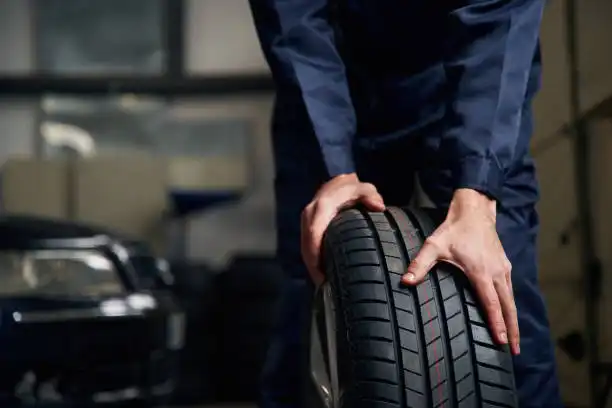- How to Choose the Right Battery for Your Elantra
- Quick Replacement Process
- Prolonging Battery Life in 2025 Models
- Cost-Saving Strategies
- Smart Charging Solutions
- FAQ
Introduction
Curious about how a proper Elantra car battery can keep your vehicle running smoothly in 2025? This guide provides smart, practical advice on selection and maintenance. Dive in to explore tips tailored for Hyundai ElantraUAE Hyundai ElantraKSA Hyundai ElantraEgypt Hyundai ElantraOman Hyundai ElantraQatar Hyundai ElantraBahrain Hyundai ElantraKuwait Hyundai Elantra owners seeking reliable performance.

How to Choose the Right Battery for Your Elantra
When selecting an Elantra car battery, start by verifying key specifications. Make sure the battery’s group size perfectly complements your vehicle’s compartment, while Cold Cranking Amps (CCA) between 470 and 550 ensure reliable starts in diverse climates. You will also want a battery offering a reserve capacity of 90-120 minutes, helping maintain electronics in the event of alternator issues.
Key Specifications Explained
Group Size (e.g., 51R): Ensures the battery fits snugly in your Elantra’s designated space.
Cold Cranking Amps (470-550 CCA): Critical for robust engine starts even during cooler mornings.
Reserve Capacity (90-120 minutes): Supports on-board electronics when your car’s alternator is off-duty.
Battery Type Comparison
Consider the types that meet GCC certification standards for the best performance:
Battery Type | Average Lifespan | Price Range (AED/SAR) | Best Suited For |
|---|---|---|---|
Standard | 3-4 years | 350-500 / 330-470 | Regular daily commutes |
AGM | 5-6 years | 650-900 / 610-850 | Premium trims and frequent start-stop usage |
EFB | 4-5 years | 500-700 / 480-670 | Vehicles with start-stop systems |
Quick Replacement Process
Replacing your Elantra car battery can be straightforward if you follow a careful procedure. The process minimizes risk and ensures that your vehicle regains its full power quickly. Always choose a battery that closely matches your model and specifications.
Tools You’ll Need
A 10mm wrench
Battery terminal cleaner
Anti-corrosion spray
Protective safety gloves
Step-by-Step Battery Replacement
Disconnect the Negative Terminal: Always remove the negative connection first to avoid any electrical mishaps.
Remove the Hold-Down Clamp: Carefully detach the clamp that secures the battery in place.
Lift Out the Old Battery: Expect a weight between 15 to 18 kg. Be cautious during removal.
Install the New Battery: Insert the new battery by matching the polarity and ensuring correct positioning, then secure it firmly.
Apply Terminal Protector: A light coating of anti-corrosion spray will help keep your battery terminals clean.
Reconnect the Terminals: Attach the positive terminal last to complete the process.
Prolonging Battery Life in 2025 Models
Regular maintenance is essential to extend your Elantra car battery’s life. By following a consistent maintenance checklist, you can avoid unexpected failures and reduce overall costs.
Maintenance Checklist
Clean battery terminals at least once a month
Perform a load test every six months (costing around AED 20/SAR 18 at service centers)
Ensure the battery is securely fastened to reduce vibration
Check that the resting voltage stays between 12.4V and 12.7V
Climate-Specific Care
High Temperature (Summer): Park your car in shaded areas and inspect electrolyte levels monthly for non-sealed batteries.
Cooler Weather (Winter): Avoid short trips of less than 15 minutes and consider using a battery blanket if temperatures drop below 10°C.

Cost-Saving Strategies
Smart battery care goes hand-in-hand with keeping an eye on your budget. Familiarize yourself with warranty policies and recycling opportunities in your region.
Warranty and Recycling Insights
Warranty Details: Most batteries offer a 24-month warranty with unlimited mileage. Note that warranty claims might be reduced on a pro-rated basis after the initial period.
Recycling Programs: Dealers often provide a credit ranging from AED 50/SAR 45 to AED 75/SAR 68 for returning your old battery core at authorized centers across the GCC.
Smart Charging Solutions
Proper charging techniques further secure your battery’s longevity. Evaluating your usage pattern ensures you choose the most compatible charger for your needs.
Recommended Charger Types
Battery Maintainers: Devices like the CTEK MXS 5.0 are ideal for regular upkeep.
Portable Jump Starters: Compact and reliable models such as the NOCO GBX45 offer emergency support.
Solar Chargers: A minimum of 15W output is suitable if you prefer renewable energy solutions.
Charging Frequency Guidelines
Usage Pattern | Recommended Charging Interval |
|---|---|
Daily Driving | Occasional check is sufficient |
Weekly Use | Recharge every 45 days |
Seasonal Vehicles | Charge at least once a month |
FAQ
What are the essential factors to consider when choosing an Elantra car battery?
Choosing the right Elantra car battery involves verifying key specifications such as group size, Cold Cranking Amps (CCA), and reserve capacity. It is important to select a battery that meets GCC certification standards for reliable performance. The type of battery — be it Standard, AGM, or EFB — will directly influence your vehicle’s response in varying temperatures and driving conditions. Understanding these requirements will help you make an informed decision, ensuring a smooth start every time.
How often should I replace my 12V battery for my Hyundai Elantra?
Battery replacement frequency largely depends on your driving habits and maintenance practices. On average, a standard battery may last between 3 to 4 years, while AGM batteries can serve up to 5 or 6 years. Frequent short trips in extreme temperatures can shorten the battery’s life. Keeping up with regular maintenance checks and using a load test can provide early indicators of battery performance degradation.
Is it safe to perform a battery replacement on my own, or should I seek professional help?
Many Elantra owners can handle their own battery replacements with the right tools and precautions. Always begin by disconnecting the negative terminal and follow the step-by-step process, which minimizes the risk of electrical shock or damage. However, if you are not comfortable working under the hood or encounter difficulties, it is advisable to consult a professional technician. Professional services ensure that the installation complies with GCC standards and that any potential issues are addressed immediately.
What are the benefits of using GCl-certified chargers and smart charging solutions?
GCC-certified chargers are designed to work efficiently under local climate conditions and meet safety thresholds. Smart charging solutions such as maintainers and solar chargers offer extended battery life and help prevent overcharging. By using these chargers, you can ensure your Elantra car battery stays in optimum condition, reducing the likelihood of unexpected breakdowns. These solutions also help manage energy consumption in a cost-effective manner.
How does climate affect my Elantra’s battery, and what specific maintenance can help in hot and cold environments?
Climatic conditions play a significant role in battery performance. Hot climates can cause battery fluid evaporation and increased corrosion, while cold weather may lead to reduced efficiency and slower starts. In high temperatures, it is recommended to park in shaded areas and routinely check electrolyte levels for non-sealed batteries. In colder regions, shorten driving trips and consider using a battery blanket to maintain core temperature and maximize the battery’s lifespan.
This article is for reference only; please adhere to the latest local laws and regulations.
Read More:
2025 Honda Civic Engine CC Guide:Smart Choices for Drivers
2025 Honda Civic Gearbox Prices in UAE:Complete Buying Guide













